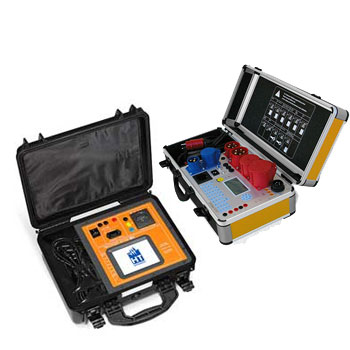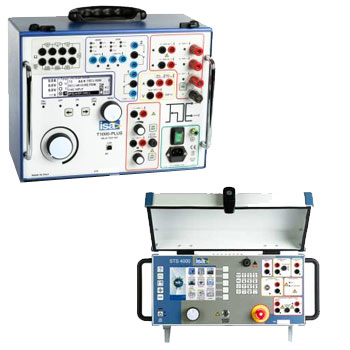- IIoT-capable with LPWAN transmission
- High transmission range for the measured values (up to 10 km [6.2 mi]) with long battery life (up to 10 years)
- Battery-operated or external power supply for radio transmission possible
- Easy integration thanks to several radio standards
 Datasheet Datasheet |
 User Manual User Manual |
- IIoT-capable with LoRaWAN® transmission
- Battery-operated LoRaWAN® wireless transmission based on LPWAN technology
- High transmission range for the measured values (up to 10 km [6 mi]) with long battery life (up to 10 years)
- Two intrinsically safe analogue input signals with 4 ... 20 mA
- The determination of differential pressures is possible

 Datasheet Datasheet |
 User Manual User Manual |
- robust aluminium die cast case
- for connecting 2-wire submersible transmitters
- 2 signal lines
- Optional:
- overvoltage protection with nominal discharge current of 10kA
- Pt 100 temperature sensor for submersible pressure transmitters with built in Pt 100 sensor
 Datasheet Datasheet |
- cost-saving ABS case
- for connecting 2-wire submersible transmitters
- integrated pressure balance item
- 2 signal lines
- Optional Features
- overvoltage protection
- HART® connection
 Datasheet Datasheet |
- free scalable display
- switch mode, hysteresis, parameteriza-ble deceleration of the contacts
- no external power supply necessary
- Product characteristics
- field display for pressure transmitter with output signal: 4 … 20 mA / 2-wire or 0 … 10 V / 3-wire
- 4-digit LCD display
- plastic or aluminium housing
- pressure compensation element with PTFE-Filter
- Optional versions
- IS-version
- 2 contacts
- 4-digit LED display

 Datasheet Datasheet |
- Functional range
- free scalable display
- switch mode, hysteresis, parameteriza-ble deceleration of the contacts
- display 330 ° rotatable
- connector 300 ° rotatable
- no external power supply necessary
- Product characteristics
- plug-on display for pressure transmitter with output signal: 4 … 20 mA / 2-wire or 0 … 10 V / 3-wire
- 4-digit LED display
- Optional versions
- IS-version
- 1 or 2 programmable contacts

 Datasheet Datasheet
|
 User Manual User Manual
|

Accessories for Pressure & Level Sensors – Connect, Protect, Calibrate
Accessories for pressure and level sensors ensure reliable installation, long service life, and traceable measurement quality. Options include process connections (G/NPT/flange), diaphragm seals, cooling elements/siphons, snubbers & restrictors, valve manifolds, shut-off valves, mounting brackets, as well as cables/connectors, gaskets, hygienic adapters, calibration adapters, and protection devices (overpressure protection, strainers).
ICS Schneider Messtechnik supports selection & sizing (materials, sealing concept, hygiene/Ex), EMC & thermal design, calibration strategy, and—on request—the IIoT integration of your measuring points.
FAQ on Accessories for Pressure & Level Sensors
Answers on selection, standards, sealing, protection, calibration, hygiene/Ex, temperature & EMC—for stable, compliant measurement points.
Which process connections are common?
| Connection | Standard | Typical Use |
|---|---|---|
| G 1/4 / G 1/2 | ISO 228 | General industry |
| ¼″ NPT / ½″ NPT | ASME | US installations / Oil & Gas |
| Tri-Clamp / Varivent® | Hygienic | Food/pharma (with diaphragm seal) |
| Flange | EN/ASME | High pressure / media with solids |
What are valve manifolds and shut-off valves for?
They allow isolation, venting, zeroing and calibration in place. For differential pressure, 2-/3-/5-valve manifolds enable safe equalization and adjustment.
Snubber/restrictor or strainer—when to use which?
For pressure spikes/pulsation (hydraulics/compressors) a snubber damps peaks. Strainers protect against particles/crystals—important for level/slurries.
When do I need a siphon/cooling element?
With steam/high medium temperatures. Siphons (pigtail tubes) create a condensate barrier; cooling elements reduce the sensor housing temperature.
Which gasket materials should I choose?
| Material | Property | Application |
|---|---|---|
| EPDM | Hot water/steam resistant | Food/pharma, CIP |
| FKM (Viton®) | Oil/fuel resistant | General industry |
| PTFE | Highly chemical resistant | Chemicals/corrosives |
| FFKM | Maximum chemical resistance | Specialty chemistry |
How do I choose cables/connectors for EMC and ingress protection?
Use shielded, twisted cables, EMC-compliant grounding, and IP rating according to the environment (IP65–IP69K). Pick connector systems (M12, DIN, bayonet) suitable for vibration/sealing.
How do I protect sensors from overpressure?
With overpressure protection devices (relief/limiter), snubbers, and properly sized measuring ranges. For filter/Δp: provide a bypass or needle restriction.
Do I need a diaphragm seal?
Yes, if the medium is hot, viscous, crystallizing, sticky or corrosive, or where hygienic, crevice-free surfaces are required. Selection of membrane, fill fluid and process connection is key.
How should I plan brackets and spacers?
Ensure vibration reduction, visibility/service access, strain-free cabling and proper vent/drain options. Spacers create thermal distance from hot zones.
What matters for differential pressure accessories?
- Equal-length impulse lines, correct gas/liquid venting or draining
- 3-/5-valve manifold for zero/span and protection
- Protection against contaminants/condensate
Which hygienic adapters are available?
Tri-Clamp, Varivent®, dairy fittings with flush diaphragms and EHEDG-compliant seals—CIP/SIP compatible with suitable fill fluids.
How often should gaskets/hoses be replaced?
Based on operating conditions (temperature/chemistry/cycles). Inspect at service intervals and replace per manufacturer or audit plan.
Is in-situ calibration possible?
Yes—via test ports/minimess, valve manifolds or calibration adapters. Perform zero/span with a documented setup.
How do I increase measurement point availability?
Use vibration decoupling, spike protection, filters/strainers, proper thermal management, and clear maintenance schedules.
What to consider for Ex-rated accessories?
Use ATEX/IECEx-approved valves, manifolds, seals and cable glands. Design intrinsically safe barriers/isolators according to zone classification.
Recommended wetted materials?
316L as standard; alternatives include Hastelloy®, Duplex, Monel®, Tantalum or PTFE-lining. Choose by corrosion data and temperature.
How should I document accessories?
Record part/lot numbers, materials/gaskets, tightening torques, IP/Ex ratings, installation location, maintenance/calibration history; for IIoT add signal/topic and serials as metadata.
Do you support selection & commissioning?
Yes—from media check and material/seal selection to manifold configuration, EMC/thermal design, calibration, and optional IIoT integration.
















































































































































































